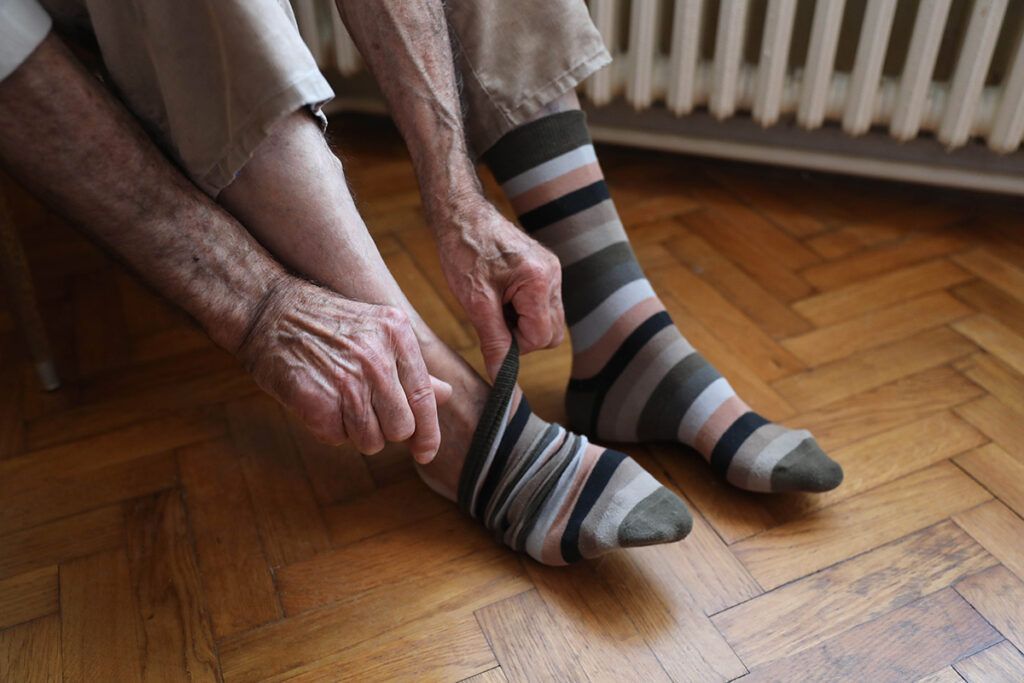Shingles is caused by the varicella-zoster virus (VZV), the same virus that causes chickenpox. If you’ve ever had chickenpox, you have a chance of developing shingles later in life. However, you can still contract shingles if you have not had chickenpox.
You will most likely notice a shingles rash as a stripe on your waist and back, and only on one side of your body. But it can develop anywhere on your body, including one of your feet or ankles.
Wherever shingles develops, it can be quite painful and is transmissible. It is important to avoid contact with others while you recover to prevent transmitting the virus. You can still pass on the virus until the last blister dries and scabs over.
Symptoms

Shingles is very common. According to the Centers for Disease Control and Prevention (CDC), more than 1 million people a year receive a shingles diagnosis.
You will typically feel unwell before noticing any shingles rash, headaches, or sensitivity to light.
Before the rash appears, you may notice tingling and itching on your skin. Some people report that this first stage feels like a tingling or burning sensation in specific areas. This can happen anywhere from several days to 48 hours before any visible symptoms develop.
The visible rash typically only develops in the areas where you notice the pain and itching days before. According to the American Academy of Dermatology Association (AAD), this can be anywhere on your body, including your ankle.
A key feature of shingles rashes is that it only affects one side of your body. This means it would only appear on one ankle.
At first, you may notice discoloration in patches, also known as macules. These will then develop into a blistering rash.
The rash normally develops on one side of your body and will be:
- red
- painful
- fluid-filled
- itching
While rare, it’s possible to develop a shingles rash on your ankle. This is because a shingles infection affects your nerves, which are also present in your feet. Developing a shingles rash on your feet may lead to complications such as drop foot, so it is important to speak with a healthcare professional if you suspect you have shingles.
However, other conditions may resemble an itchy shingles rash on your ankle. These can include:
- Contact dermatitis: This condition commonly results from something irritating the skin, which causes an itchy, blistering rash. For example, you may notice itchy rashes on your ankles after changing your laundry detergent or body lotion.
- Psoriasis: There are several types of psoriasis, but this condition can display as red scaly plaques. It is a chronic condition that causes itchy and sore skin.
- Athlete’s foot: This is a fungal infection that most often appears as an itchy and blistering rash on your feet and toes but can also develop on your ankles. It is the result of a ringworm infection.
Causes
Shingles is the result of the same virus that causes chickenpox. If you have previously had an infection of chickenpox, you are at risk of the virus reactivating and causing shingles.
VZV targets the nerve cells along the nerve network across your body. This is why it most often appears as a straight band on your torso, as most of your nerves extend outwards from your spine. However, this means wherever in your body there are nerves, a shingles rash can develop. This includes your ankles and feet.
If you need help covering the cost of medications, the free Optum Perks Discount Card could help you save up to 80% on prescription drugs. Follow the links on drug names for savings on that medication, or search for a specific drug here.
